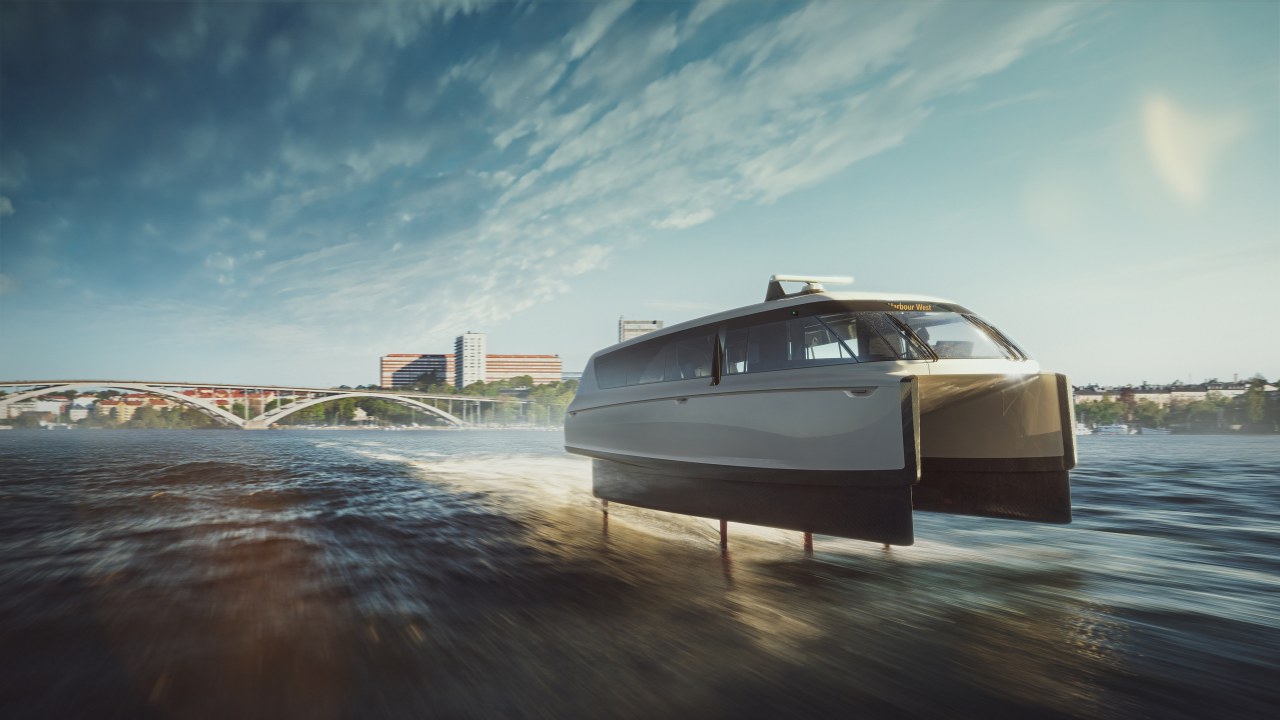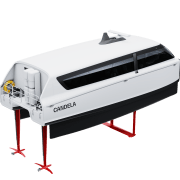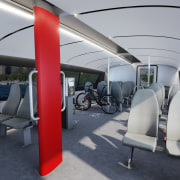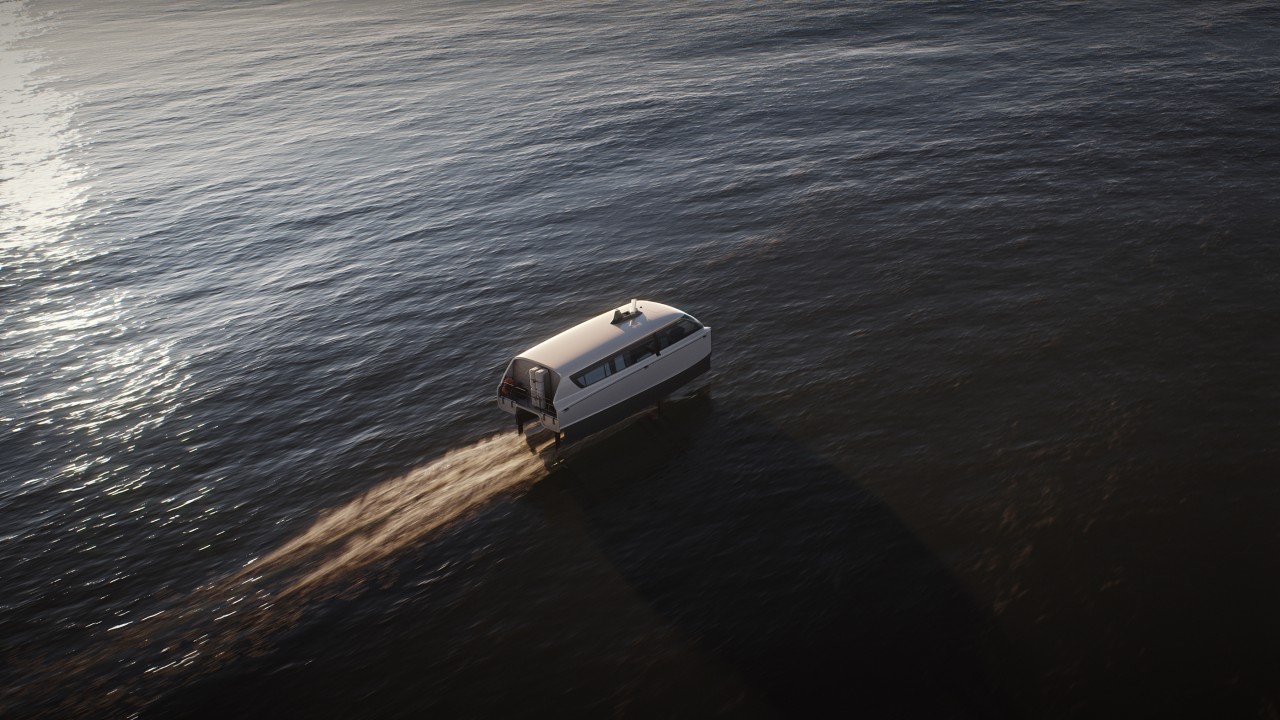By water? Sort of, I'll catch the ferry
The first electric flying ferry will make waterborne public transport faster than cars and subway – the Candela P-12 Shuttle is set to join Stockholm's less exciting commuting options
Designed by marine technology company Candela
The world’s fastest electric ship, the Candela P-12 Shuttle, is set to herald in a new era of transport in Stockholm.
The innovative hydro-foiling electric ferry will reduce emissions and slash commuting times – and the city believes it will make waterborne public transport more attractive than trains, buses, and cars.
Candela has released the first pictures of what will be the world’s fastest, longest-range and most energy efficient electric ship ever.
The Candela P-12 Shuttle will be shuttling citizens between the sprawling Stockholm suburb of Ekerö and the city centre.
Flying across the water, the 30-passenger electric vessel has a speed of 30 knots – considerably faster than any other electric ship in the world.
It also provides faster commuting than the subway and bus lines it competes with, as well as being infinitely more energy efficient than the diesel vessels currently servicing the same route.
Perhaps most significant, the ship is faster than travelling by car during rush hour.
The secret to its high speed and long range are the three carbon fibre wings that extend from under the hull. These active hydrofoils allow the ship to lift itself above the water, thus decreasing drag.
500% more efficient ships
Candela’s technology reduces energy per passenger kilometre by 95% compared to current vessels, allowing for an unprecedented range of 50 nautical miles at service speed.
Using the equivalent of 0.1 kWh of electricity per passenger kilometre, the ship is more energy efficient than a hybrid electric bus.
Also, with up to 200 kW DC charging, it can charge its battery in under one hour.
Most importantly, the razor-sharp carbon fibre foils will slash many commuters’ travel times in half.
With the ability to cover even the longest routes in Stockholm at high speeds, the Candela P-12 Shuttle will be used to shorten the commute between the rapidly expanding Stockholm suburb of Ekerö and the city centre.
Currently a 55-minute trip by bus, subway, or conventional ferry (or even car, during rush hour), the Candela P-12 Shuttle will cover the 15 km route in only 25 minutes – saving the commuter an average 50 minutes per day.
This will have a huge positive impact on people’s lives – you can work one more hour or pick up your children from school one hour earlier, says Erik Eklund, vice president, Commercial Vessels at Candela.
As the hydrofoiling Candela P-12 Shuttle creates near zero wake, it has been granted an exemption from the 12-knot speed limit, allowing it to fly into the city centre without causing wave damage to other vessels or sensitive shorelines.
In fact, the minuscule propeller wash is considerably smaller than the wake from conventional passenger ships travelling at slow speeds.
Ending sea sickness
The first electric flying ferry will also elevate passenger experience to an entirely new level, thanks to the most advanced computer system found in a passenger boat.
Those prone to seasickness will appreciate the extremely smooth ride in adverse weather.
Flying silently above the waves, the Candela Flight Controller – a computer which regulates the hydrofoils 100 times per second – ensures a steady, smooth ride over waves that would otherwise make many feel queasy.
"There’s no other ship that has this kind of active electronic stabilisation," says Eklund.
"Flying aboard the P-12 Shuttle in rough seas will feel more like being on a modern express train than on a boat: it’s quiet, smooth and stable."
The Region of Stockholm will operate the first P-12 Shuttle ship for a nine-month trial period.
If it meets the high expectations placed on it, the hope is that the city’s fleet of over 70 diesel vessels eventually will be replaced by P-12 Shuttles – but also that land transport from congested highways can shift to the waterways.
Maritime traffic is the region's most popular public transport, and I want to expand it, says Gustav Hemming, vice president of the Regional Executive Board in Stockholm.
"However, we need better technology to travel faster and reduce climate impact – therefore, we are happy to try this new technology for waterborne traffic.
"This project can contribute to solutions that we can use in Stockholm, but also provides opportunities for both exports and jobs in the Stockholm region."
A comeback for waterborne transport
Ever since faster and cheaper steam trains started to replace expensive and slow coal-fired packet boats in the 1850s, urban transport has come to rely on land-based vehicles – even in cities like Stockholm, San Francisco, and New York, where the waterways offer natural cross connections between regions and boroughs.
With Candela’s P-12 Shuttle, the current status quo will once again be challenged.
In rush hour traffic, the ship is faster than buses and cars on many routes.
Thanks to the hydrofoil’s efficiency, it can compete on mileage costs, too.
And unlike new subway lines or highways, the flying electric super-ship can be inserted on new routes without massive infrastructure investments – all that is needed is a dock and electric power.
The P-12 Shuttle’s handy size – with a comfortable and airy cabin for 30 seated passengers – adds to its versatility.
In Stockholm, passenger vessels have a 17% occupancy rate on average, meaning that a 300-passenger ship carries only about 50 people on most days.
Candela’s vision is to replace today’s large, predominantly diesel, ships with nimble fleets of faster and smaller P-12 Shuttles, allowing for more frequent departures and more passengers carried, at a lower cost for the operator.
On the Stockholm-Ekerö route, Candela’s proposal is to replace the current pair of 200-person diesel vessels with at least five P-12 Shuttles, which would double passenger volume potential and lower operating cost.
"Instead of two departures per day, there would be a P-12 Shuttle departing every 11 minutes," says Erik Eklund.
"This allows commuters to ignore timetables and just go to the dock and wait for the next boat."
Designed by: Candela
Story by: Trendsideas
Home kitchen bathroom commercial design
Connected to the ocean
Masculine meets mixed use
Contrast and connection











